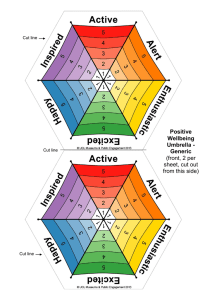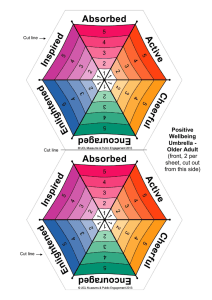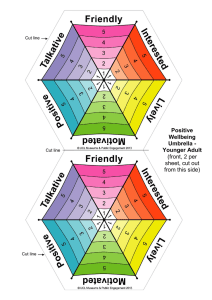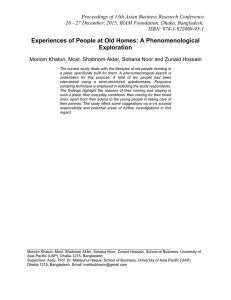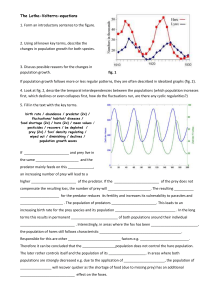Measuring wellbeing A framework for social statistics Garth Bode ESA/STAT/AC.161/2
advertisement
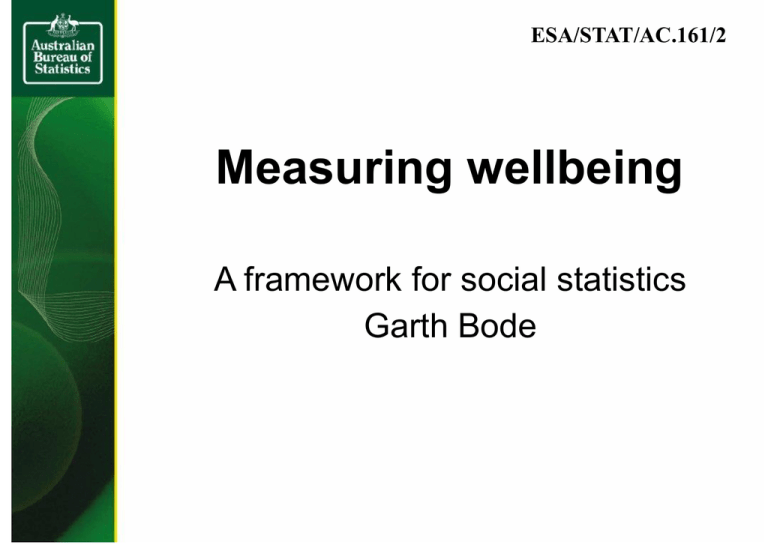
ESA/STAT/AC.161/2 Measuring wellbeing A framework for social statistics Garth Bode The basic wellbeing framework Areas of concern Wellbeing Population groups For example: Population Family and community Males/females Individual wellbeing Health Children/youth Education and training Work Elderly people transactions Economic resources Culture and leisure Long-term unemployed Low income families Housing Crime and justice Indigenous people Households in rental housing Societal wellbeing Communities in selected localities Areas of concern Aspects of life contributing to wellbeing Areas of concern Support and nurture through family and community Family and community Freedom from disability and illness Health Realisation of personal potential through education Education and training Satisfying and rewarding work both economic & non-economic Work Command over economic resources, enabling consumption Economic resources Shelter, security and privacy, through housing Housing Personal safety and protection from crime Crime and justice Time for and access to cultural and leisure activities Culture and leisure Population groups Children and youth Indigenous people Women Retired people Long-term unemployed Low income families Older people Overseas born Lone parents People with disabilities Wellbeing matrix areas of concern by population groups Areas of social concern Selected pop'n groups Family & Community Health Unemployed Education & Training a Work a Indigenous people a a Older people a a a a a a a a Children etc a Housing Crime & Justice Culture & Leisure a a a a a a a a a a a a Retirees Lone parents Economic resources a a a a a Social transactions Criminal Justice Framework The framework in action Areas of concern and ABS structure National Statistical Centres Household Survey Centres Population groups and survey content Core data items A template for analysis Australian Social Trends An enhanced wellbeing framework Cultural, political, legal and institutional context Natural attributes Genetic contribution Personality type Introvert Extrovert Life history experience Attitudes and beliefs Personal Resources Wellbeing Areas of concern Population groups Population Males/females Family and community Individual wellbeing Indigenous people Health Children/youth Education and training Work Elderly people transactions Economic resources Long -term unemployed Low Income families Housing Crime and justice Households in rental housing Societal wellbeing Culture and leisure Communities in selected localities Community resources Natural Capital Produced and Financial Capital Human Capital Social Capital Measures of Australia's Progress Economy Society Environment individuals/living together Treasury wellbeing framework Looking ahead Information and communications technology Environmental concern Social inclusion/multiple disadvantage
